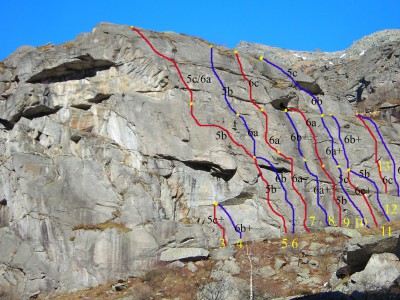Since the beginning of the twentieth century, when Adolf Hess theorized klettemschulen (climbing schools) usefulness, the lower Lanzo valleys represented a favored ground for subalpine mountaineers’ training and practice. This was the time in which mountaineering without guide and “walls’ conquest” was taking hold. It is known that the Lunelle ridge was among the first to be used for the purpose, particularly at the hands of Turin “climbing academics”. Also known is the fact that talented climbers such as Mario Gatto, Firmino Palozzi and Giulio Castelli, at the end of the twenties, in order to improve their technique climbed Balme, hamlet of Cantoira, and Pian della Mussa boulders, actually becoming the modern bouldering pioneers. Also to be remembered the Ala di Stura Courbassere rocks and boulders, for decades strictly tied to the “Boccalatte” and “Gervasutti” mountaineering school history. At the end of the sixties, when a cultural revolution was sprouting up in the conservative mountaineering world, the lower valley practice cliffs were given new dignity and with full right asserted themselves as “ordeal fields”. The “Nuovo Mattino” (New Morning) mountaineering embryo that would later on materialize in the nearby Orco Valley was being built on the Lanzo Valleys walls. When, in the eighties, sport climbing took hold as a discipline end to itself, bolted routes increased by the tens among these mountains. At the same speed as this fascinating discipline, the Lanzo Valleys, nowadays, stand as a northwestern Alps favorite area offering about a thousand different itineraries. The climber looking for hazard will appreciate the difficult “Balme dei Tornetti” walls in Viù or the “Parete delle Gare” in Groscavallo. People loving “traditional” climbing will retrace historical tracks on the Val Grande rocks, particularly in the Sea valley where trad climbers will still be able to discover many unexplored opportunities. Who loves the plaisir routes will like the worked and well-equipped prasinite of “Rocca di Lities” or of “Falesia la Baita” in the Viù Valley.
Text and photos by Marco Blatto ©













